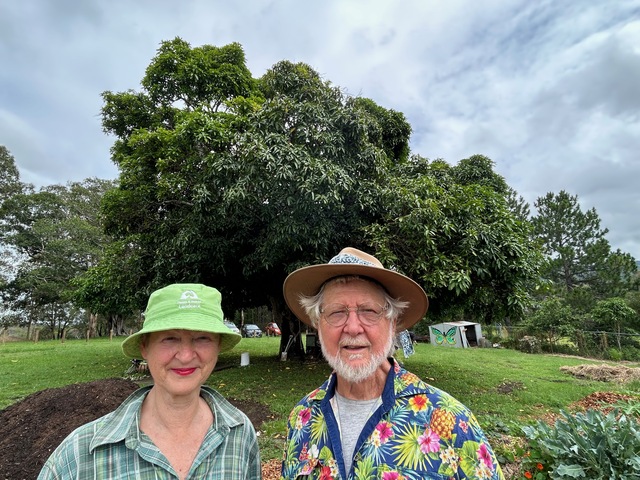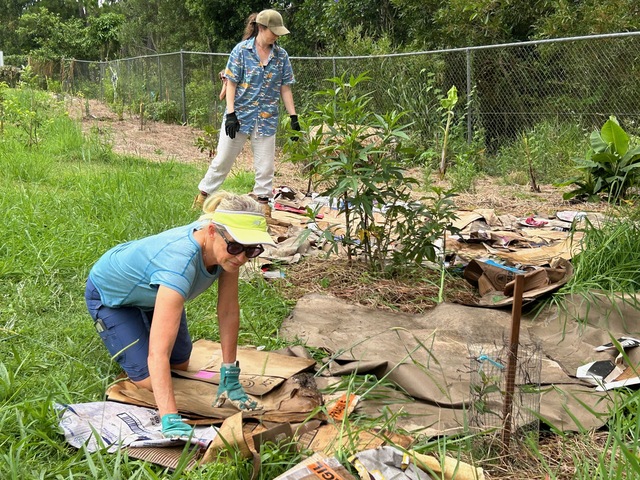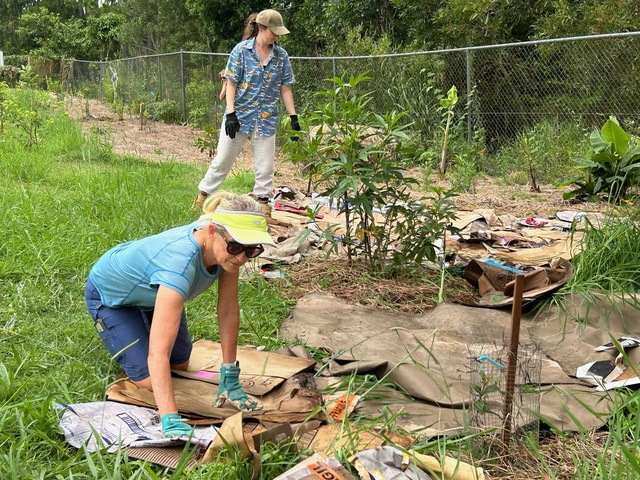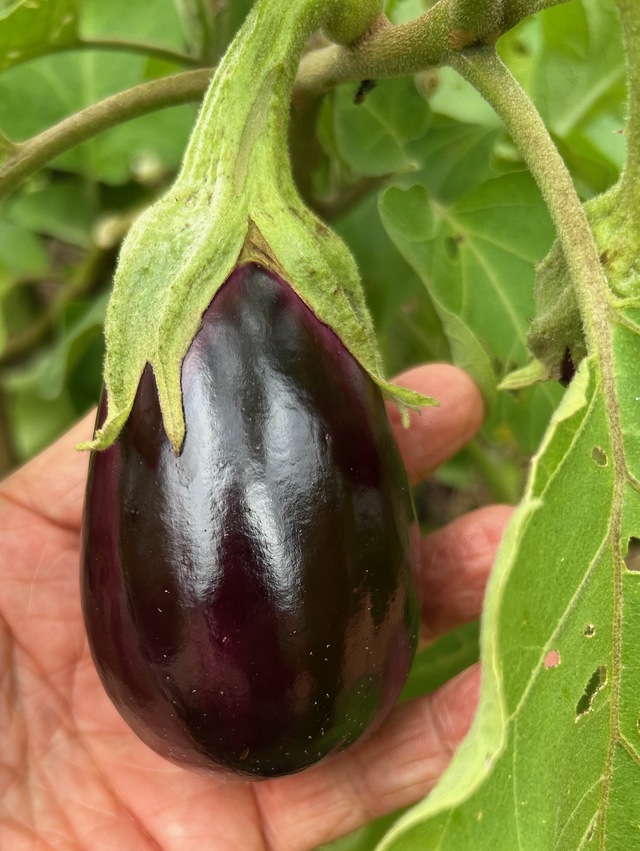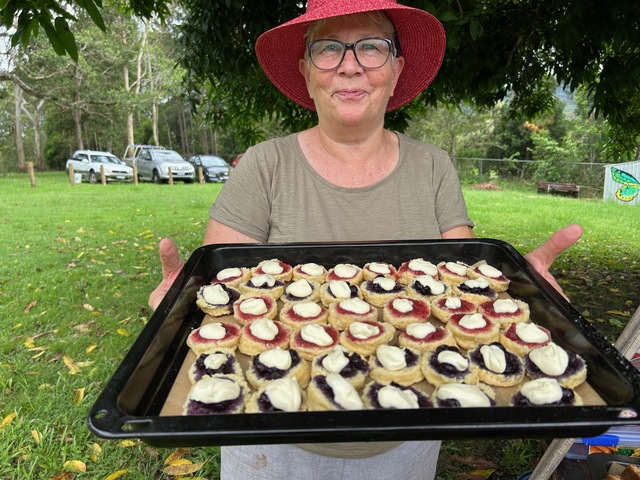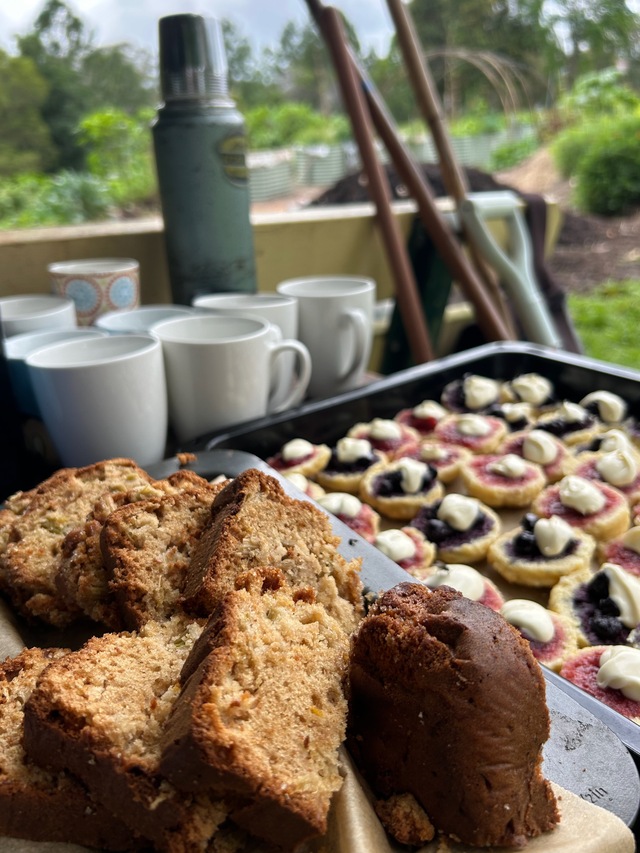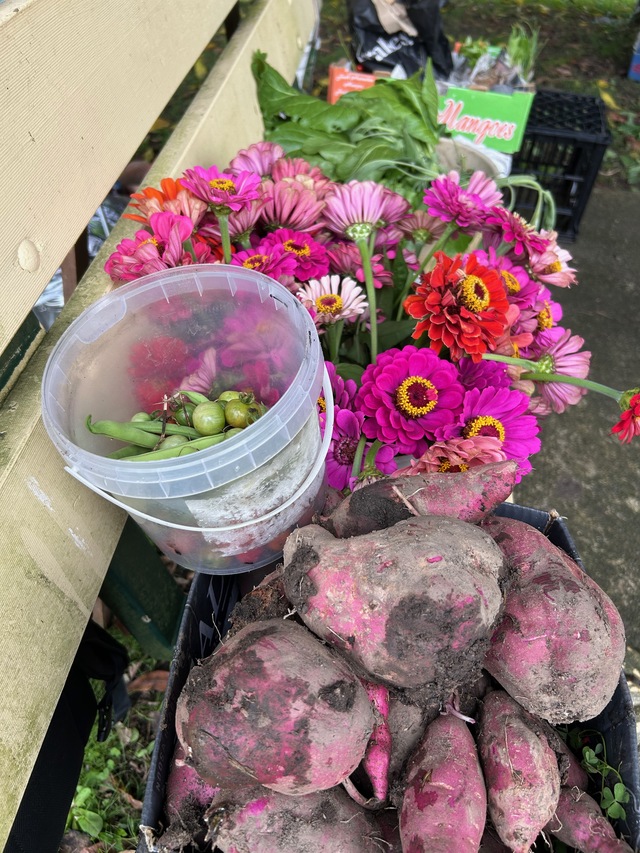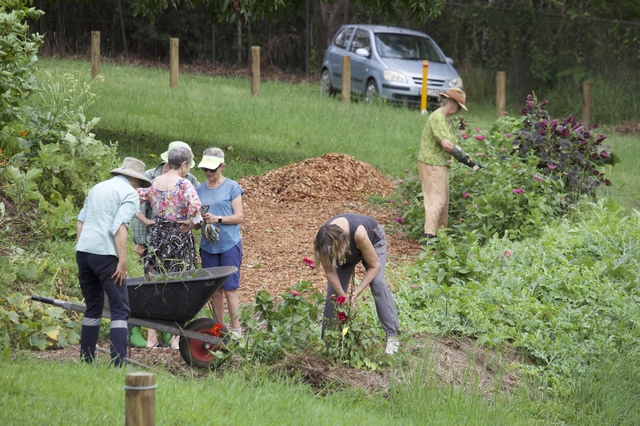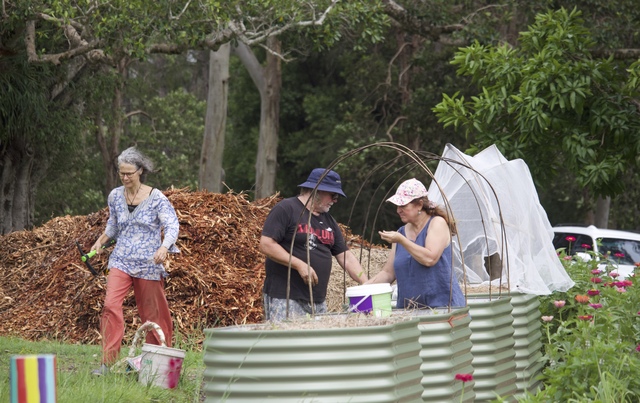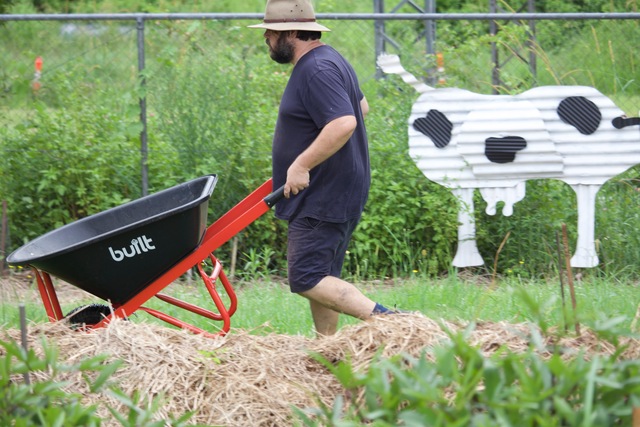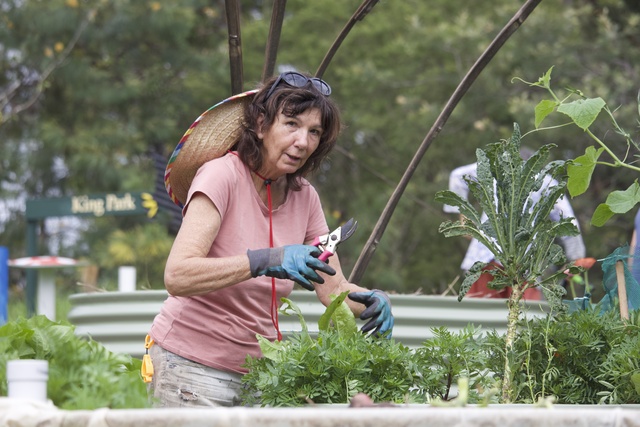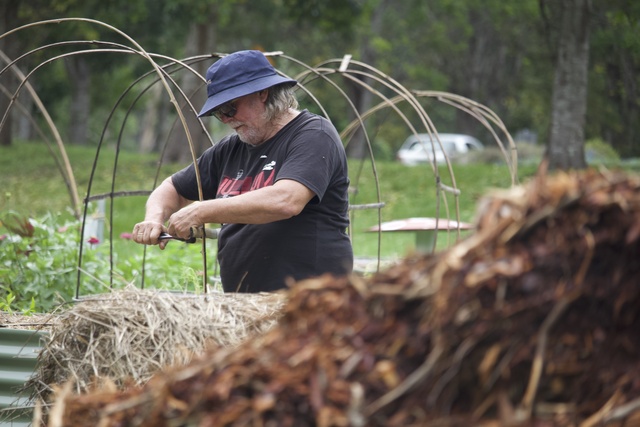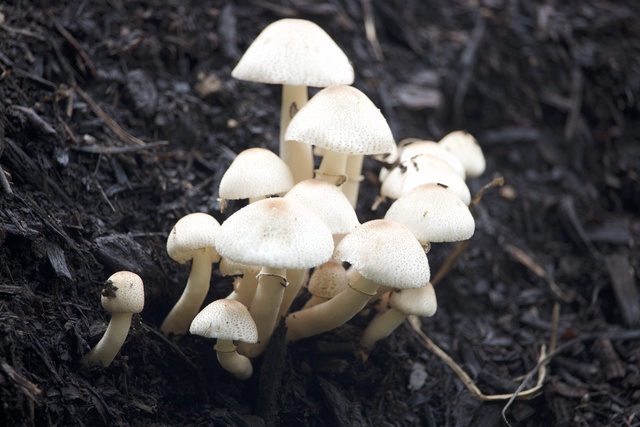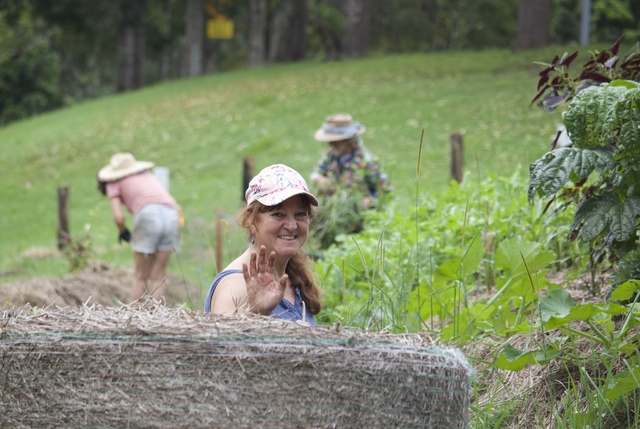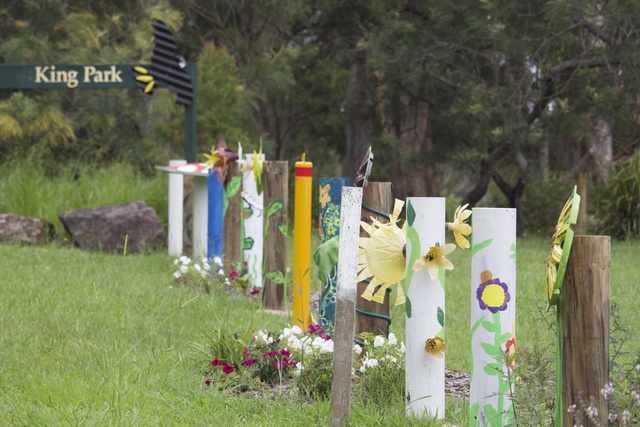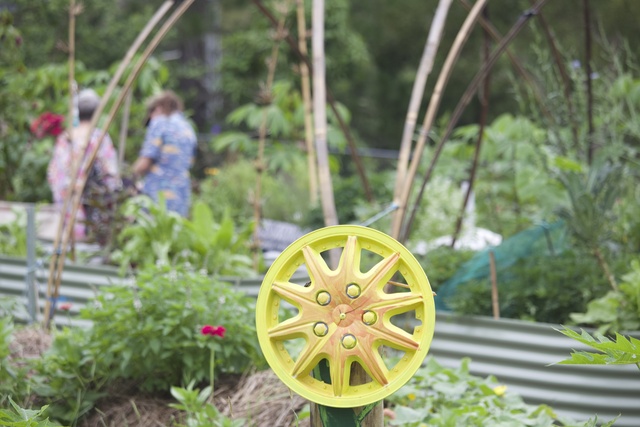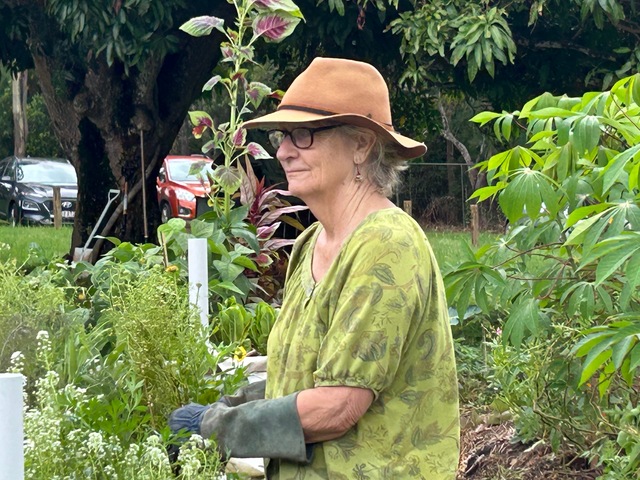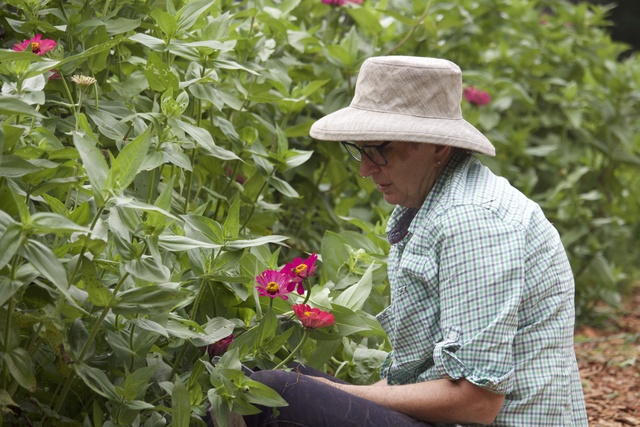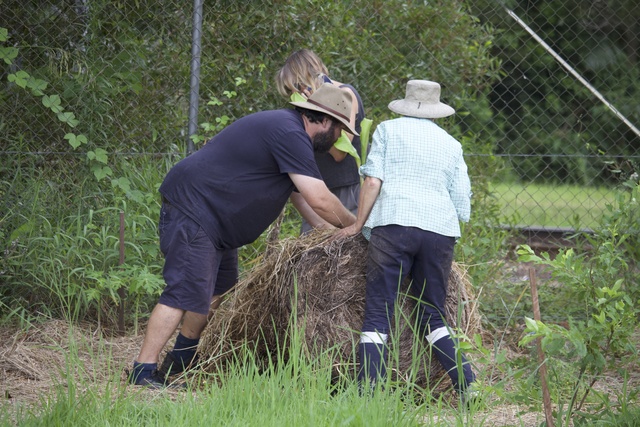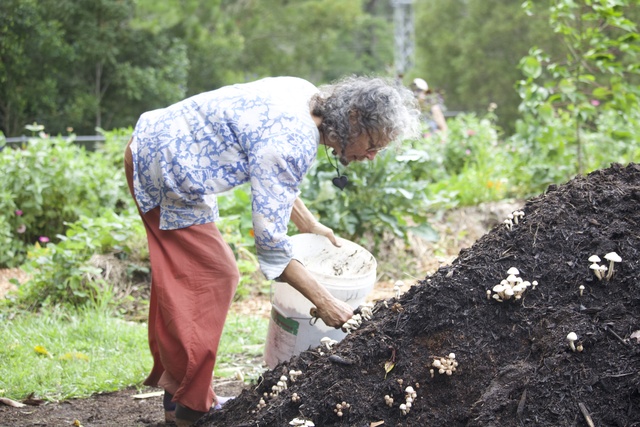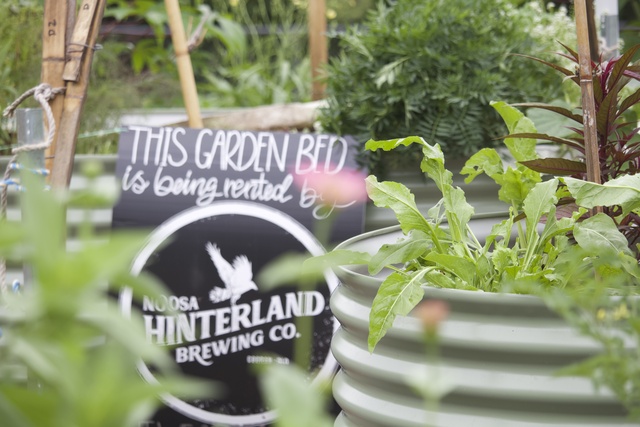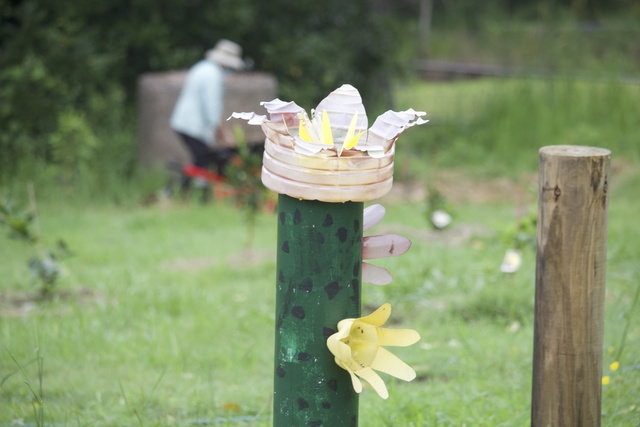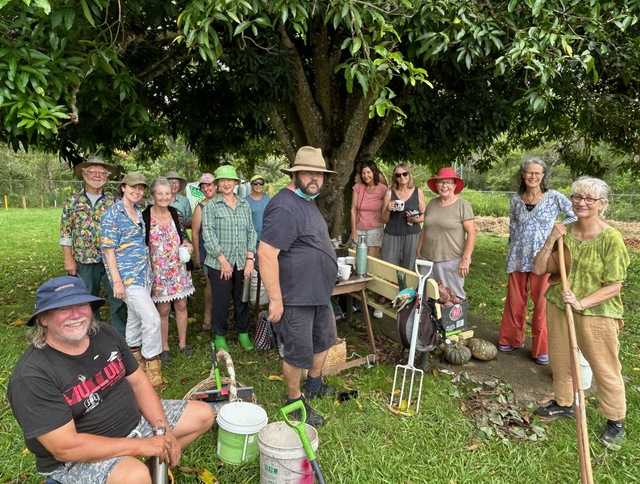
When a community works together it can achieve some amazing things. ERLE LEVEY was at Cooran to see what the organic garden club has been able to achieve in eight months.
“More than anything this garden feeds the soul, and it feeds the heart. It brings so many people together who wouldn’t have otherwise touched one another.”
It’s a gathering point, a place to share ideas, food and friendships, and through that improve the soil and environment.
The Cooran Organic Garden (COG) shows what can be achieved when a community works together.
In this case to use but also preserve a precious little corner of the hinterland village.
I needed to find out more about this group, comprising people of all ages and from all walks of life.
That is what brought me to be standing beneath a spreading mango tree, enjoying morning tea as part of a monthly Sunday working bee.
There’s home-made ginger cake and pikelets with cream and mulbrerry jam.
The mango tree has been significant in the formation and on-going growth of COG.
That and a large fig tree that has been part of Cooran’s identity.
There’s about 15 at the working bee and that number fluctuates depending on what else is happening.
This morning a few of the workers will go across King St to the Cooran Hall after they clean up. It’s a rehearsal for the cafe choir that is going to sing at Noosa Hinterland Brewing just up the street later in the afternoon.
That’s an indication of the sense of community – a village known for its Tall Trees Art Exhibition in September, and its monthly Cooran Acoustic Music nights.
I’m speaking with secretary Ann Sinclair and president Lance Pearce.
To be honest, what this band of volunteers has achieved in a matter of months is quite amazing.
It was just open ground the last time I was here. The members must feel very proud.
“April was our first working bee,’’ Ann tells me, “so within six months we’ve achieved this.
“We have had local help, such as from our neighbours at Alfredson’s Joinery, who came over and dug the first swale here.
“We’ve got wicking beds and just normal beds and those that you can stand up to and garden.
“There are some beautiful plants – tomato, sweet potatoes, egg plants – a whole variety of things in those beds. Now we’re creating a shelter for some shade because of summer.
“We come together once a week for an open garden of a Thursday afternoon, and the third Sunday morning of each month for the working bee.
“Everyone can come to work and pick some herbs and vegetables … it’s good social interaction.’’
Having watched the working bee in progress, there are those that get their hands dirty with compost and mulch, and those who create structures such as a trellis for tomatoes or dig new garden beds. Then there are those who like to take time to reflect – on the garden, on their life, on friends or relatives who have been part of their life.
While the garden started under the mango tree, the genesis was from a group named Cooran Earth Rights.
“We came together in 2017,’’ Ann said, “and worked with the Lock The Gate movement against the renewal of a coal exploration permit that sat on the whole ridge of Arthy’s Road.
“It was coming up to a year before the permit was due to be renewed so we decided to survey the whole town to get their feelings on it. Politicians and councillors were behind us.
“We worked on a very structured survey, that was tabled in parliament and had an excellent result for the community. It would have had such an impact on the urban footprint of the town.
“It doesn’t mean they would have dug for coal but they could have explored for it. And who knows if it was to go ahead, what this area would look like now.’’
The village is based on lifestyle and farming. So when the group ticked the mining lease off the things to achieve, they wondered what else could Cooran Earth Rights do for the community to make it more sustainable.
“A community garden was always on the list, then Covid came along and everything went a bit quiet.
“After that we were invited by Noosa Council, along with all community groups, to put forward our thoughts, ideas and plans to be more sustainable.
“Our presentation was for a safe, separated bike path to get from Cooran to Pomona, and a community garden.
“We had a small offshoot group called Repower Cooran. That was looking at solar on the rooftops to create a possible community battery where people would feed in and then draw down the electricity generated.
“Then Covid led to us having other priorities.’’
The Covid pandemic reminded people what communities were like – neighbours getting to know each other and the benefits of the town, the region and the state.
“We had that little bubble that we lived in,’’ Ann said. “We looked in and looked after each other, to see what was going on around us.’’
That led to Lance, as president, to put forward the idea of a community garden.
A group sat around Lance’s kitchen table to formulate the plans. These were taken to council and the result was a permit for the space.
“We got that last August,’’ Ann said, “then did some fundraising that included a grant to pay for a water connection.
“That was the first thing we did, then marked out the space and got some help from council to make the garden happen.
“In April this year we dug the first swale … so within six or seven months this is where we are today.
“We have the best soil. Look at this: There’s little mushrooms growing in it.
“We’ve got mulch. We’ve had donations of plants, flowers and seedlings.
“Local people and businesses have done things at the best rates they could possibly do.’’
I’m interested in where the collective knowledge of the 60-or-so members comes from and how it is utilised.
In this area in the 1980s, there was a groundswell of artistic people who were also involved in permaculture and organic gardening.
It seems that hasn’t gone away. There are places where the land is very good for gardening and farming.
This is an example of being very nourishing for the soil in such an ideal zone with consistent rainfall, temperature, good aspect and drainage.
For Australia, it’s vital that we stop the amount of topsoil and nutrients from being lost each year. The terracing and swales help in this regard.
Many small holdings in the Cooran area are being turned to regenerative farming and the owners exchanging ideas.
“We have a lot of knowledge in this group, and the capacity to learn more and literally to grow with that.
“We grow every day as a person if we are prepared to learn.
“Just look at the way people are connecting. We have a lot of knowledge in this group.
“Yet we have the capacity to learn more and literally grow the garden.
“This was just grass on the bank and we thought what a great opportunity.’’
Lance is a project manager and said it was important to set about establishing the garden in an orderly manner. This included a site analysis, with two or three sites that had potential were nominated.
“This one was successful. It’s got an easterly aspect, good drainage … it doesn’t flood and yet it’s close to facilities.
“When you’re looking at sustainability and permaculture, it’s good to have a garden that’s not going to flood in times of emergency.
“Cooran can become isolated through local disasters, and having a food supply like this is really good.
“Covid again was a great reminder of the basics of life such as growing your own food. It was a reality check of what was important.
“Hopefully those things don’t happen again, but there is always the potential that they could – whether local or regional.
“More than anything this garden feeds the soul, and it feeds the heart. It brings so many people together who wouldn’t have otherwise touched one another.
“There are some people who have gone through some pretty traumatic times recently. That has brought them into a group situation when normally they would have steered cleared of a group.
“You’re in a group, but you can work side-by-side. You can work by yourself. You just go and do what you want to do. There is a list of things.
“I suppose going forward we’ve started with an architect on concept plans for a shelter. As you can see we’re going to stop for a morning tea, and that’s going to be under the mango tree … hopefully it won’t be raining.’’
There’s two trees here that are so significant to the site – the mango, which was probably attached to the old house for the station master when the railway stop was manned.
There’s the long, soft whoosh of the breeze in the leaves.
“I stood here and could see what could be established.
“The really significant one is the fig tree, that is a centre point of town. It is precious to everyone.
“There were two other houses. The mango tree would have been a critical part of that. We’re hanging onto that bit of history.’’
Mount Cooran forms an imposing backdrop to the garden, and the terracing was an integral part of the initial design.
“It’s amazing. It’s working,’’ Lance said. “We’ve had drought, we’ve had floods … so you need to plan for what’s ahead.
“This terracing, the contour banks and the swales, are part of that … it slows the run-off.’’
Lance is experienced in water-sensitive urban design – reducing the amount of sediment leaving the site, and reducing the amount of nitrogen phosphorous.
“This, in a way, will benefit the water quality. The land was bare grass but we are slowing the run-off, using the run-off and filtering the run-off.’’
Without money, the garden wouldn’t be possible as it is now. The major benefactors have been Noosa Shire Council, Member for Noosa Sandy Bolton, a COG member who contributed $3000 to get water connected, and Unity Water was able to give a reduced connection cost as a not for profit organisation.
“All of these things contribute,’’ Lance said, “and then you have the community of Cooran who have embraced and supported this … it’s for them.’’
While there are 60-odd members of COG it has a floating work force.
“Not everyone comes to one working bee,’’ Lance said. “People drop in, they drop out, they do what they can, when they can.
“There are retired people, grey nomads, some still working. That’s the whole part of it – it’s organic, it takes a village to raise a garden.’’
The garden has been brightened up by the artistic works of Aanja La Zanya who started by doing workshops and decorating the bollards that define the plot.
Plastic bottles and hub caps have been turned into flowers, satellite dishes into mushrooms.
Recycling or up-cycling is a feature that at the same time reminds how wasteful society can be.
One thing that stands out is how committed COG members are to connecting community, and making the garden a place where anyone can come to gather, to pick some fruit, herbs or vegetables, or contribute.
Lance sees himself as a recent resident of Cooran but is immensely proud to have been accepted into the community.
“It’s a diverse community. But they are accepting of the diversity. It’s a good melting pot.
“When community comes together and achieves things such as this, it’s just stunning.’’
Cooran s known for its art and music, and the garden is an extension of that.
“We’re fitting in with the community,’’ Lance said, “… not competing with anyone.
“It will keep growing, and flowering.’’
That’s the thing, the group is being humble and regarding each other as small achievers.
Small achievers but doing great things.

